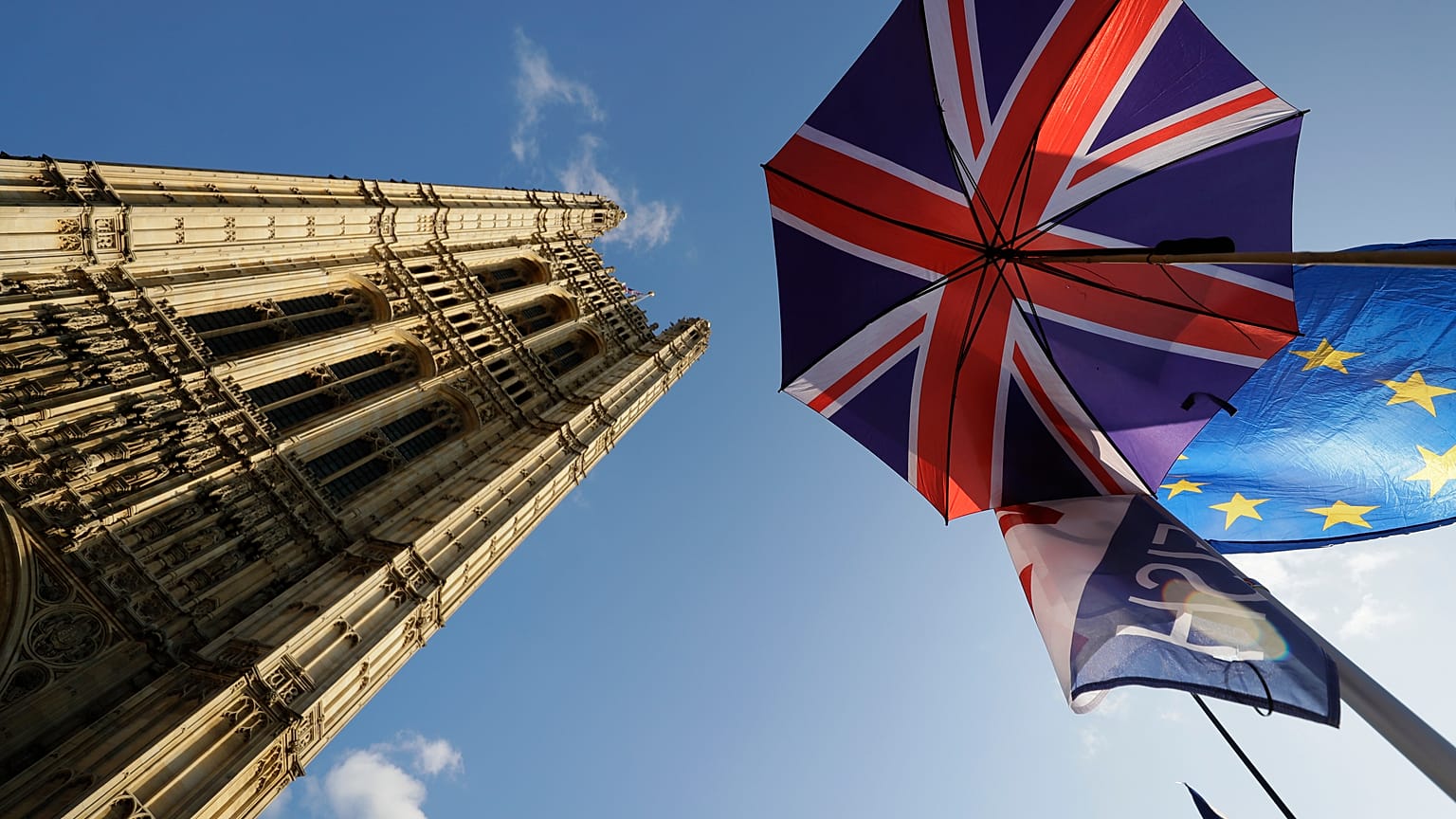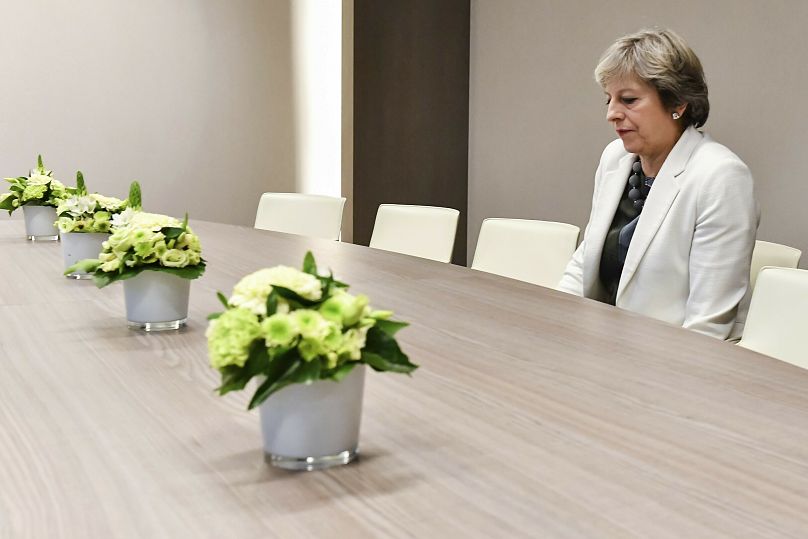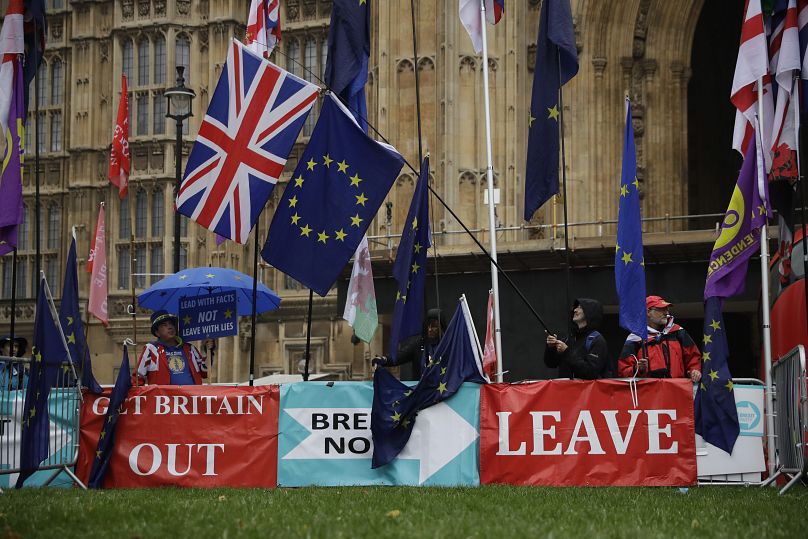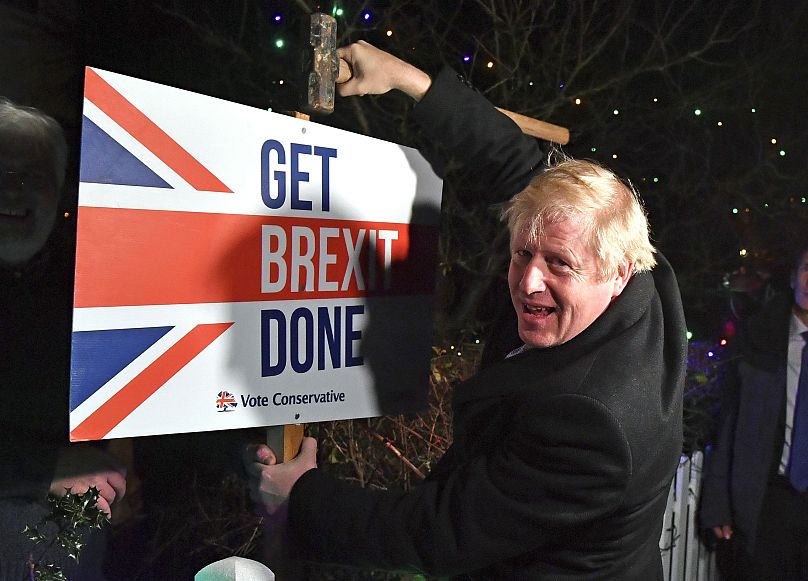A blow-by-blow account of the UK’s tortuous route to Brexit, from the 2016 EU referendum to the present day.
The United Kingdom finally leaves the European Union on Friday January 31, more than three and a half years since the country voted narrowly for Brexit in a June 2016 referendum.
Since then the UK has wrestled with the consequences, deeply divided by the outcome. As much of Europe has looked on in frustration, British political paralysis has brought two general elections and a third prime minister.
Here we look back at the key events since the historic vote in June 2016.
2016
June 23: The United Kingdom votes in a referendum to leave the European Union, sparking a political earthquake across Europe. But the result is close: 52 to 48%. A majority of voters in England and Wales have backed "Leave", but Scotland and Northern Ireland have voted "Remain". David Cameron, who led the campaign to remain in the EU, says he will resign as prime minister.
July 11: Theresa May wins the Conservative Party leadership contest and becomes prime minister two days later. “Brexit means Brexit, and we will make a success of it,” she says to supporters. Prominent pro-Brexit campaigners are given top jobs in May’s cabinet. There is shock in Europe as the post of foreign secretary, the UK’s top diplomat, is filled by the distinctly undiplomatic Boris Johnson.
July 27: Former EU Commissioner and French foreign minister Michel Barnier is named as the EU’s Chief Negotiator for the forthcoming Brexit talks on the UK’s withdrawal terms.
October 2: Theresa May tells the Conservative Party conference that she will trigger the EU’s Article 50 – the mechanism to set the formal exit process in motion – by the end of March 2017. Her speech sets out several red lines that dismay EU leaders, in a pledge to make the UK “a fully independent, sovereign country”.
November 3: The UK’s High Court rules that the British government cannot trigger Article 50 without parliamentary approval (a decision later confirmed by the Supreme Court). It provokes the Daily Mail to castigate the judges as “Enemies of the People” as newspapers vent their fury at what they see as an attempt to frustrate Brexit.
Read more: Brexit Guide: Where are we now – and how did we get here?
2017
January 17: Theresa May’s Lancaster House speech confirms the UK intends to leave the EU’s single market. No deal with the EU would be better than “a bad deal for Britain”, she says.
March 29: May sends a letter to European Council President Donald Tusk, triggering Article 50. It sets the date for the UK’s departure in two years’ time: March 29, 2019.
Read more: 'I Will Survive' – the UK's historic vote to leave the EU and its aftermath
April 18: May unexpectedly announces a snap general election in the UK, to be held in June.
May 2017: The European Commission, mandated by the European Council, publishes its negotiating directives for the forthcoming talks on the UK’s withdrawal. The UK's financial settlement, citizens’ rights and arrangements for the Irish border are identified as key divorce issues.
June 8: The Conservatives lose their majority at the general election. May is forced to do a deal with Northern Irish unionists from the DUP to stay in power.
July 17: Brexit talks officially get underway in Brussels between EU and UK negotiators.
September 22: Theresa May says the UK will honour its budget commitments and proposes a two-year post-Brexit transition period, using a major speech in Florence to develop her vision of the future UK-EU relationship.
December 8: An overnight dash to Brussels by Theresa May precedes a major breakthrough in talks on the divorce terms, which have been deadlocked for weeks. The UK and EU publish a joint report outlining enough progress on key issues for talks to move on to future relations in the new year.
2018
March 2: Theresa May gives more hints of compromise in a speech at Mansion House in London. The Brexit talks have seen the UK make significant concessions in major policy areas including free movement, budget contributions, the role of the European Court of Justice (ECJ), trade and fishing rights.
March 19: The UK and EU publish a draft agreement on Britain’s withdrawal. But the agreement is not totally agreed. The text is colour-coded, with whole chunks left white indicating that “no agreement has yet been found”.
July 6: May unveils to her cabinet her much-awaited Chequers plan, named after the venue, the prime minister’s country residence. It builds on May’s previously outlined policy of “managed divergence” from EU rules. But it suggests a much softer Brexit than earlier statements had suggested, with a “common rulebook” with the EU over goods. The plan is officially published the following week.
July 8: The UK’s Brexit minister David Davis resigns in protest. Foreign secretary Boris Johnson follows suit the next day. Other ministers resign too: in total, 18 will have quit over Brexit by the end of the year.
September 21: May is given the cold shoulder by EU leaders at a summit in Salzburg. Her Chequers plan is seen as an attempt to “cherry-pick” from EU rules. European Council President Donald Tusk says parts of it “will not work” and risk “undermining the single market”. Other EU leaders have repeatedly made similar criticisms. May’s proposal for the Irish border is dismissed as illegal by Michel Barnier.
Read more: What went wrong with Theresa May's Chequers plan?
November 25: The UK and the EU strike a deal on the UK’s exit terms. It is signed off by leaders of the other EU27 member states at a summit in Brussels – but needs the approval of the UK and European parliaments to take effect. Agreement is sealed after May adapts her Brexit plan to include an all-UK customs union with the EU to resolve the controversial Irish border “backstop”.
December 13: Theresa May survives a vote of confidence in her leadership of the Conservative Party. But she is forced to promise to step down before the next election, amid an angry backlash to her Brexit deal. A vote in parliament is postponed until January because of the strength of opposition.
2019
January 15: The government loses the first “meaningful vote” in parliament on the Brexit deal, by 432 votes to 202. It marks the worst government parliamentary defeat in the UK’s history.
January 30: The UK parliament gives May a mandate to go back to Brussels to seek “alternative arrangements” to the Irish backstop.
March 12: The government loses the second meaningful vote by 149 votes, after the UK’s attorney-general says a hastily-revised deal does not guarantee that the UK can exit the backstop unilaterally.
March 20: Obliged to do so by parliament, May asks the EU to delay Brexit from March 29 until June 30. The next day EU leaders offer the UK two alternative extensions: to May 22 if the deal is passed, April 12 if it is not.
March 23: Hundreds of thousands of pro-EU protesters march in London to demand a second referendum on the UK’s membership.
March 29: The government loses a third meaningful vote on the Brexit deal in parliament, by a margin of 58 votes. However, this period also sees MPs unable to find a majority for any alternative solution – including a second referendum.
What was in Theresa May's Brexit deal and why was it so unpopular?
How Brexit defined then destroyed Theresa May's premiership
April 10/11: After May requests another Brexit delay, EU leaders at a special summit approve a “flexible” extension of the UK’s membership, until October 31. The UK can leave the EU earlier if it passes the divorce deal.
May 23: The UK takes part in elections for the European Parliament, obliged to do so as it is still an EU member. The next day Theresa May says she will stand down as Conservative Party leader on June 7. She will remain as prime minister until a new leader in place.
May 27: The European election results bring victory for Nigel Farage’s Brexit Party. There is a strong showing for pro-Remain parties, but May’s Conservatives and the Labour opposition are annihilated.
July 23: Boris Johnson wins the Tory leadership contest after several weeks of ballots. The following day he enters Downing Street as the UK’s new prime minister.
Read more: 'Never Can Say Goodbye' – the UK's Brexit paralysis
August 19: Johnson issues a formal plea to the EU to ditch the Irish backstop from the withdrawal agreement. The EU refuses.
August 28: The UK Parliament is prorogued, or suspended, for five weeks, upon advice given to Queen Elizabeth II by Boris Johnson’s government.
September 3: 21 rebel Conservative MPs vote against the government in protest at its Brexit strategy of driving the UK towards an exit from the EU by October 31, with or without an agreed deal. They are expelled from the party.
September 5: Johnson says he would rather be “dead in a ditch” than ask for another Brexit extension. It is one of several such comments over the summer and early autumn, insisting that the UK will leave the EU by October 31.
September 9: The “Benn bill” becomes law, in effect preventing the UK from leaving the EU with no exit deal, without parliament’s consent.
September 24: The UK’s Supreme Court rules unanimously that the government’s suspension of parliament was unlawful. The House of Commons reopens for business.
September 29: The Conservative Party conference opens, with a new slogan: “Get Brexit done”.
Read more: Boris Johnson's month of Brexit turmoil in September
October 3: The UK government sends a new Brexit plan to Brussels, including the removal of the backstop. It is widely greeted with scepticism, and rejected by the European Commission three days later.
October 8: UK-EU talks all but collapse amid acrimony. EU Council President Donald Tusk accuses Johnson of playing a “stupid blame game”.
October 10: UK and Irish prime ministers Boris Johnson and Leo Varadkar announce a “pathway to a possible deal” as they meet in England. EU and UK negotiators agree to intensify talks.
October 17: The UK and EU announce dramatically that they have struck a new Brexit deal, ahead of a Brussels summit. It replaces the Irish backstop, following a compromise which sees the UK in particular make concessions over Northern Ireland.
Read more: From deal to delay: What happened with Brexit in October?
October 19: At a special Saturday sitting, British MPs withhold their approval for the deal until laws implementing Brexit are in place. It means Johnson is obliged to seek another Brexit delay from the EU. Another huge pro-EU march takes place in London.
October 22: Johnson puts Brexit legislation on “pause”, citing MPs’ obstacles.
October 28: The EU agrees to offer the UK a Brexit “flextension” until January 31. The offer is formally approved the next day.
October 29: The House of Commons approves a general election on December 12, lifting previous objections to Boris Johnson’s repeated requests.
December 1: Ursula von der Leyen takes office as European Commission President, replacing Juncker. The new European Council President is Charles Michel, taking over from Donald Tusk.
December 12: The UK’s general election is won convincingly by Boris Johnson’s Conservatives, who gain an 80-seat majority. But Scotland and Northern Ireland in particular register strong anti-Brexit votes.
The road to Brexit: Boris Johnson's first six months as UK prime minister
What has changed with Boris Johnson's Brexit bill? | Euronews answers
Brexit: What happens at midnight on Friday January 31? Not a lot.
2020
January 23: The UK’s EU Withdrawal bill becomes law, after a relatively smooth passage through parliament compared to the earlier havoc.
January 29: The European Parliament approves the Brexit divorce deal.
January 31: The UK officially leaves the EU at midnight CET (11 p.m. UK time).
February 1: An 11-month transition phase begins, running to December 31, 2020. Most arrangements will remain the same but both sides face a race against the clock to sort out the future EU-UK relationship.
Read more on the history of the UK's complicated relations with Europe:
Part 1, 1973-1990: Je T'aime, Moi Non Plus


















